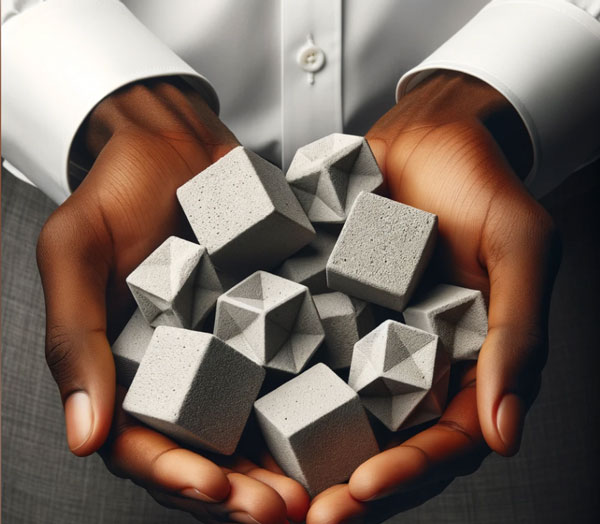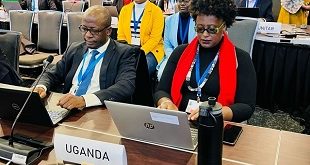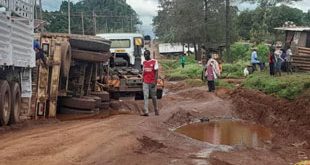
Innovative cement technologies that cut emissions and utilise local materials are entering Africa, where the green cement market is forecast to hit $867.9 million in four years.
SPECIAL REPORT | BIRD AGENCY | Africa’s green cement market is poised for rapid growth as new technologies and investors seek to tap the continent’s vast potential sustainable construction market.
Africa’s green cement and concrete market, valued at $485.1 million in 2022, is expected to grow at compound annual growth of over ten per cent, to reach $867.9 million by 2028, according to recent Research and Markets forecasts.
A surge in large-scale infrastructure projects across African nations is driving this demand.
Key projects like hydropower plants, oil refineries, port expansions, and residential and commercial building initiatives in countries such as Nigeria, Egypt, and Kenya are expected to further bolster the market for green cement and concrete during the forecast period.
In October last year, the IFC agreed to shell out a €45 million green loan to four OIP subsidiaries, including Morocco’s CIMAT and West Africa’s CIMAF, to enhance low-carbon cement supply in Burkina Faso, Chad, and Mali.
Of this, €32.4 million was allocated to constructing a calcined clay production facility at CIMAF Bobo Dioulasso in Burkina Faso, aimed at reducing clinker use, boosting energy efficiency, and slashing greenhouse gas emissions.
The facility was designed to produce LC3, a cost-effective, high-quality, low-carbon cement.
Now, Bton, a German in in-situ and climate-positive concrete firm announced it is making a foray into Africa with an initial offering in Ghana, Kenya, South Africa and Morocco.
Its proprietary tech reduces the baseline of the CO2 emissions from cement by roughly 80% and then sinks carbon into the concrete, allowing Bton to claim that the product is actually carbon-negative.
“It’s first of all enabling the use of low-emitting cement substitutes at scale and in addition the use (of) carbon sinking materials. So first we reduce the baseline by 70% and then we overcompensate the remaining CO2 footprint by sinking carbon into the concrete – so we are overall climate positive,” explained Bton chief executive, Thomas Demmel
“This comes along with the use of abundant, local materials such as desert sand as well as affordable lightweight aggregates.
Dimmel asserts that incorporating locally sourced materials like desert sand into their concrete production aligns well with the resources available in Africa.
“We are bringing this technology to the continent to not only accommodate the need, especially of affordable housing, which roughly is 100 million over the next years in Africa,” he said.
UN figures also note a significant challenge in affordable housing across Africa, with its projections suggesting the current deficit could rise to about 200 million by 2030.
With the staggering demand for housing, Demmel emphasises the need to decarbonise the construction industry.
He also revealed that he has started to discuss with some countries and projects in Africa, such as Kenya, South Africa and Nigeria, but stated that Bton is open to exploring more opportunities with the local industry.
“We started to discuss briefly on some countries and some projects, something in Kenya, we discuss a little bit in Ghana on the road as a light level and Morocco is something we start to look at South Africa and also Nigeria,” he said.
“But that doesn’t exclude any other nations, we have been approached by a couple of other countries, Zambia, for example, and we’re more than happy to seriously look at opportunities, work with the local industry, combined that with our technology, and give a new new circular and climate positive way of solving the housing needs.”
Bton plans to partner with the precast industry in Africa, providing them with concrete that meets their criteria on climate, abundance, and cost.
“There’s a project in, for example, in Kenya, a new smart city (Konza city) that is planned, we talk to them, and they’re very open, and we think that we find a way, especially in the higher density areas for constructive concrete,” he said.
The rising trend of green building construction, which facilitates the reduction of water waste, energy consumption, and air pollution, is also boosting the demand for green cement in Africa.
Green buildings also offer an improved indoor environment by enhancing lighting sources, thermal conditions, ergonomic features, and air quality.
The report also highlights the increasing initiatives to construct smart cities, which aim to restrict the over-expenditure of natural resources and encourage citizens to live life sustainably, as another catalyst for the market.
Smart cities leverage digital technologies, such as the Internet of Things (IoT), artificial intelligence (AI), and big data, to optimize urban planning, transportation, energy, and waste management.
*****
SOURCE: bird story agency
 The Independent Uganda: You get the Truth we Pay the Price
The Independent Uganda: You get the Truth we Pay the Price


